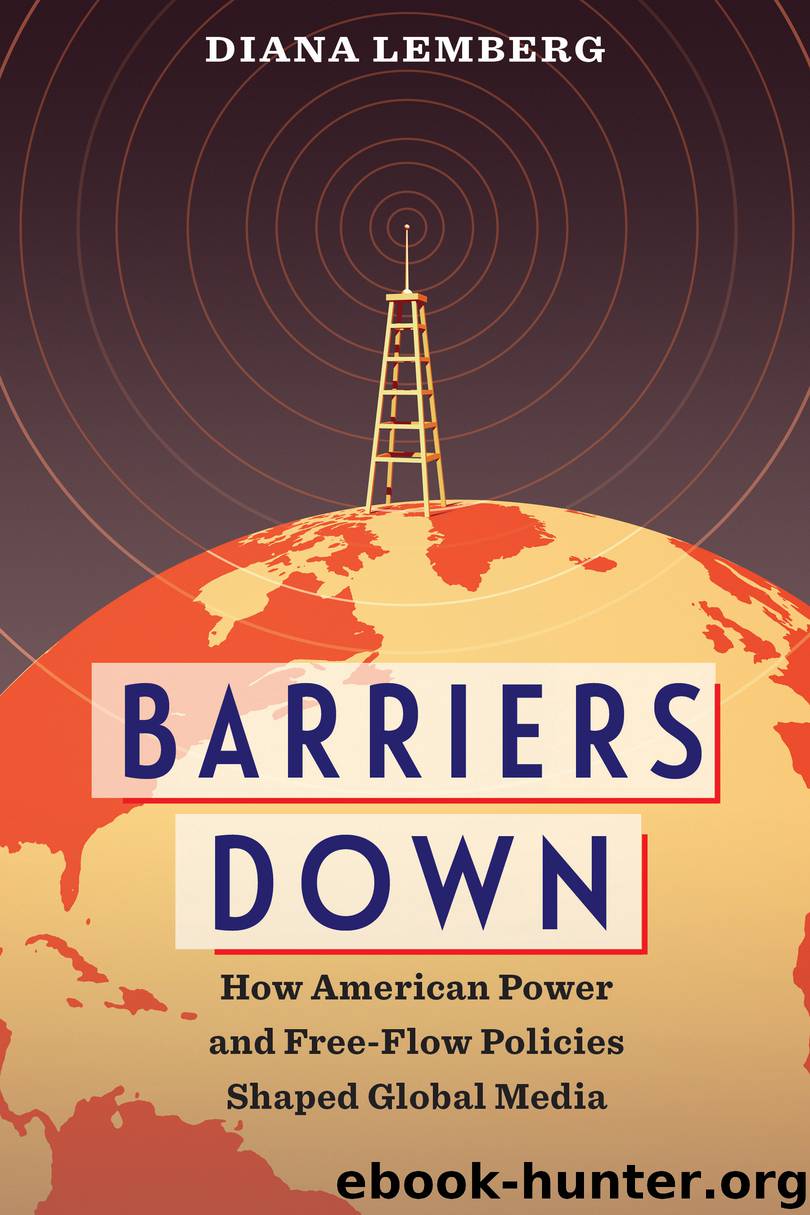Barriers Down by Diana Lemberg

Author:Diana Lemberg
Language: eng
Format: epub
Publisher: Columbia University Press
UPDATING ARTICLE 19: JEAN D’ARCY AND THE RIGHT TO COMMUNICATE
Like Richard Hoggart, the French media expert Jean d’Arcy believed that growing cross-border and cross-cultural communication might be shaped through deliberate policy to serve the greater good. Having spent a decade in New York as director of the UN Radio and Visual Services Division (1961–1971), d’Arcy could appreciate the virtues of the more liberalized American audiovisual sector vis-à-vis European public broadcasting monopolies.38 D’Arcy’s initial intervention into international communication debates—the 1969 essay “Direct Broadcast Satellites and the Right to Communicate,” published in the official review of the European Broadcasting Union—took a generally liberal approach to communications technologies. The article charted a dialectic of technological breakthrough and political repression at least as old as the printing press: printing’s revolutionary potential had been largely overlooked by its contemporaries, save the “secular and religious authorities” who sought to control and profit from it. D’Arcy suggested sympathy for the printing-press renegades of centuries past, the “ ‘pirate stations’ where prohibited works could be produced … at that time, too, located across the border.” These he interpreted as an avant la lettre instance of a transnational public exerting pressure on authorities to more fully democratize communications technologies and information flows. D’Arcy believed that the advent of direct-broadcast satellites, which he forecast for roughly the late 1980s, offered a historic opportunity to restructure communications for the wider public benefit—if only it could be seized.39
However, d’Arcy’s proposals were not wholly in line with the increasingly antiregulatory American approach to cross-border broadcasting. “The closest possible intergovernmental cooperation is obviously an essential condition for the full development of direct broadcast satellites,” d’Arcy argued, for only cooperation would enable the international community to strike a balance between technological advances and the prerogatives of nation-states, between freedom and “mutual restraint.” This was where d’Arcy’s “right to communicate” entered the picture. First, he explained, “one should work more towards a pattern of groups of neighbouring countries” exchanging and pooling broadcasting resources “rather than … overreach ourselves by trying to set up from the beginning a world-wide organization or system of agreements in those communications areas where the common culture or traditions of a region or a continent play a predominant part.” The failure of earlier UN efforts to secure a binding international agreement on freedom of information was proof positive in d’Arcy’s mind that it was better to begin gradually, on a regional scale, akin to existing European institutions like the European Economic Community and Eurovision (the latter of which he had helped to create). He presented cultural differences as something that communications planners, if they were to achieve genuine consensus, could not afford to ignore.40
The right to communicate soon began to attract international attention. In a 1972 letter to d’Arcy, communication scholar L. S. Harms of the University of Hawaii at Manoa—located just next door to the East-West Center where Daniel Lerner and Wilbur Schramm were producing their state-of-the-field development-communication anthologies—drew a parallel between Lerner’s and d’Arcy’s work: the “new theory of communication”
Download
This site does not store any files on its server. We only index and link to content provided by other sites. Please contact the content providers to delete copyright contents if any and email us, we'll remove relevant links or contents immediately.
The Secret History by Donna Tartt(18846)
The Social Justice Warrior Handbook by Lisa De Pasquale(12141)
Thirteen Reasons Why by Jay Asher(8794)
This Is How You Lose Her by Junot Diaz(6794)
Weapons of Math Destruction by Cathy O'Neil(6143)
Zero to One by Peter Thiel(5686)
Beartown by Fredrik Backman(5597)
The Myth of the Strong Leader by Archie Brown(5425)
The Fire Next Time by James Baldwin(5249)
How Democracies Die by Steven Levitsky & Daniel Ziblatt(5128)
Promise Me, Dad by Joe Biden(5087)
Stone's Rules by Roger Stone(5026)
A Higher Loyalty: Truth, Lies, and Leadership by James Comey(4843)
100 Deadly Skills by Clint Emerson(4840)
Rise and Kill First by Ronen Bergman(4703)
Secrecy World by Jake Bernstein(4646)
The David Icke Guide to the Global Conspiracy (and how to end it) by David Icke(4625)
The Farm by Tom Rob Smith(4435)
The Doomsday Machine by Daniel Ellsberg(4416)
